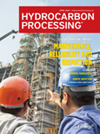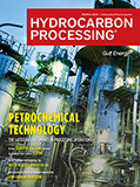Process Control
Navigating the complex LNG value chain
Throughout the last two decades, LNG technology improvements have built a global natural gas market. This globalization has led to an increase in demand, but also an increase in instability, as changing global events and the drive towards increased sustainability in energy sources have created market fluctuations from all directions.
Nozomi Networks extends partnership with Yokogawa to deliver OT and IoT security services worldwide
Nozomi Networks Inc. announced it has extended its partnership with Yokogawa Electric Corporation, to address global demand for managed security services and solutions designed to holistically satisfy the unique OT and IoT cybersecurity requirements of process manufacturers.
Yokogawa launches OpreX Robot Management Core
Yokogawa Electric Corporation announced the development and release of OpreX Robot Management Core, a software application in the OpreX Asset Management and Integrity family and will go on sale on March 22, 2024.
Report: 80% of Petrochemical Process Engineers Concerned Power Equipment Could Affect Refinery Operations
New reports exploring the European petrochemicals industry has discovered over 80% of its process engineering professionals are concerned their current power equipment could affect refinery operations.
Digitalization in refineries: A strategic roadmap for operational excellence—Part 1
The refinery industry is one of the biggest industries worldwide. According to Statista, the global oil refinery capacity tipped 100 MMbpd in 2022. This capacity reflects nearly a twofold increase since 1970.
Improve specialty chemical production through digital transformation
From large petrochemical plants to smaller-scale specialty chemical operations, digital transformation is a significant technology and operational improvement trend throughout the global chemical industry.
The process control journey: Advanced process control—Part 2
Part 1 of this article, “The process control journey: Primary process control—Part 1” appeared in the August issue of Hydrocarbon Processing and discussed the performance and stability of complex-wide primary (PID) control.

- India receives fuel oil cargo in Russian SCF tanker after brief halt 4/26
- Biden administration (U.S.) to release SAF tax credit model 4/26
- Boeing, Wagner advance Australia’s SAF Industry 4/26
- S-Oil expects Q2 refining margins to remain steady then trend upward 4/26
- Vitol to charter supertankers from U.S. to Nigeria's Dangote refinery 4/26
- Refiner Valero beats profit estimates on resilient demand, tight supplies 4/26




